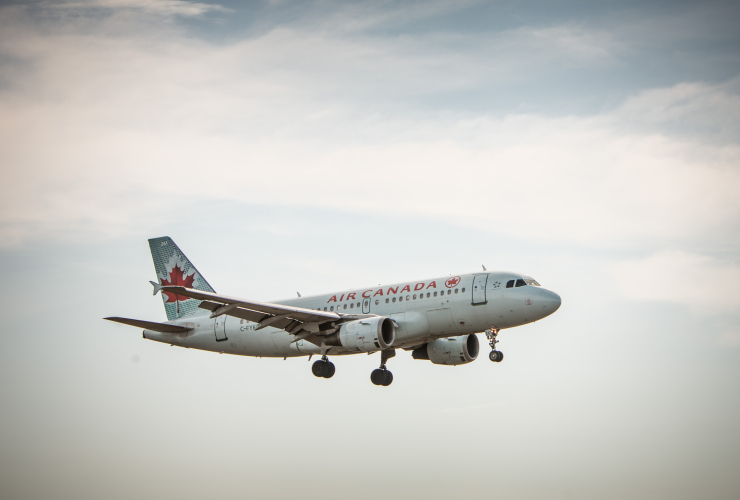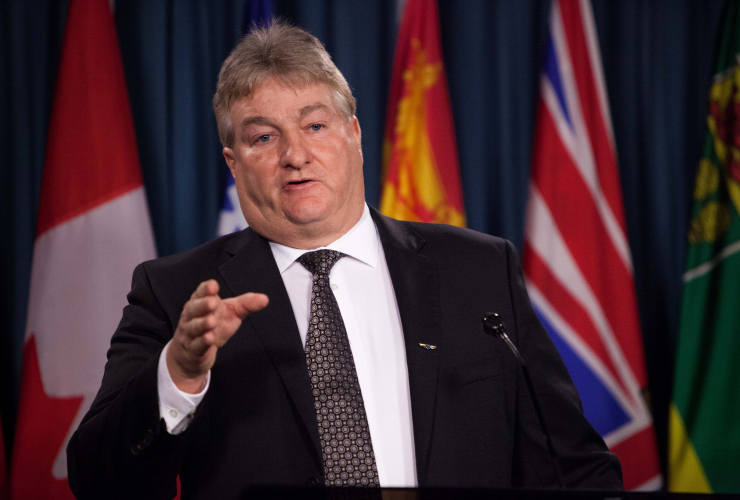A jump in aviation accidents last year underlines the risk that Canada faces of a major aviation disaster if it doesn't toughen safety inspections, says the group representing Canada's airline pilots.
The Canadian Federal Pilots Association portrayed a new series of statistics released by the Transportation Safety Board (TSB) on Tuesday, in the context of a series of disturbing events, including the death of a teenager.
Nineteen-year-old Arson Fern Jr. died from his injuries late December after a plane carrying him crashed on Dec. 13, 2017 near Fond-du-Lac, Sask. His death marked the first fatal accident in Canada involving a Canadian airliner in six years, the TSB confirmed.
The year also represented "the first known collision" between a drone and a commercial aircraft in Canada, the safety board noted, when one collided with an airplane above Quebec City’s Jean Lesage airport last October, causing minor damage to the plane.
There were also two high-profile near-misses: a March 7, 2017 WestJet flight to St. Maarten, where the plane came close to water, and a July 7, 2017 Air Canada flight to San Francisco, where the plane came close to ground.
The 2017 numbers missed a Jan. 5, 2018 collision between two planes on the tarmac at Toronto's Pearson International Airport by only a few days.
In all, there were 232 aviation accidents inside or outside Canada involving Canadian-registered aircraft in 2017, according to TSB's annual statistics, 10 more than the year prior.
At 94, the number of accidents among commercial operators grew by half in a single year, and reverses a five-year decline.
Greg McConnell, national chairperson of the pilots association, said he wasn’t surprised by the new numbers.
“Being within a few feet (of an accident) in San Francisco should have been enough of a wakeup call for everybody,” he said in an interview.
There were also 921 reportable “incidents,” which the safety board defines as anything from engine failure to system malfunctions, onboard fires, crew member incapacity, depressurizations, fuel shortages and the like.
The increase in the number of incidents compared to the year prior was “significant,” the TSB concluded, also beating out the five-year average of 737.
Transport Minister Marc Garneau's office forwarded questions about the new statistics to Transport Canada, which said the safety and security of Canadians is a top priority.
"Transport Canada has a robust oversight program that allows the department to prioritize its resources to areas that provide the greatest safety benefit," said spokeswoman Annie Joannette in an emailed response.
"When an area is deemed a low risk, resources are reallocated to areas identified as higher risk. Transport Canada continues to monitor its aviation safety program."

Pilots group wants tougher safety inspections
The pilots association has been sounding the alarm about declining airline safety since last April, when it released a survey of federal aviation inspectors.
The survey showed a large majority of its members believed budget cuts and weak policies at Transport Canada increased the risk of a major aviation accident in the near future.
The association took issue with Transport Canada’s shift to a Safety Management System. The pilots association said this transferred responsibility for monitoring safety issues to the airlines themselves.
With regard to Tuesday’s numbers, McConnell reiterated that the department's Safety Management System was still letting airlines run safety checks themselves.
He said with this system in place, the number of inspections means little if inspections aren't robust.
“What this allows the department to do is get their metrics up and say, ‘We’re doing the same number of inspections that we’ve always done,’ where in fact they’re doing a lesser level of inspections,” he said.
He also argued the department was cutting training for inspectors, only requiring an introductory-style course that doesn’t include other information he said was needed for would-be inspectors to understand their duties.
“When the people doing the inspections aren’t being trained to do the inspections, [and] when the type of inspections they’re doing are being cut back, the result is the types of things that you’re going to continue to see," said McConnell.
Transport Canada defends its oversight
Joannette, the departmental spokeswoman, defended the government's Safety Management Systems, saying they weren't a replacement for department-led activity.
"Safety Management Systems add an extra layer of protection; they do not replace the requirement for operators to comply with the Canadian Aviation Regulations or with the department’s regular inspection activities," she said.
She said there were 125,699 "oversight activities" in 2016-2017, or over 10,000 a month. The department has a "variety of tools" at its disposal to verify compliance, she added, and inspections are planned at regular intervals.
"All companies have a planned inspection schedule, which is set according to certain criteria. When Transport Canada identifies non-compliance, the department takes enforcement action, which could include issuing warnings, monetary penalties, and/or grounding of a company’s aircraft," she said.
In December, Garneau said in a statement that the federal government was co-ordinating a response to the plane crash that led Fern Jr.'s death with the RCMP, National Defence and Transport Canada
He said it was also co-operating with the TSB on the same issue.
"Safety is Transport Canada's top priority. We will continue to work with the Transportation Safety Board to do all we can to maintain and enhance the safety of Canada's air sector,” he said at the time.
Garneau also told media last fall that he was “extremely preoccupied” by the drone collision. "This should not have happened. That drone should not have been there," he said.
Inspections should be planned
Inspections should be planned at irregular intervals, not regular intervals, so that the companies can not prepare for them.






Comments